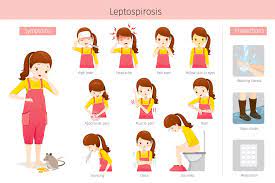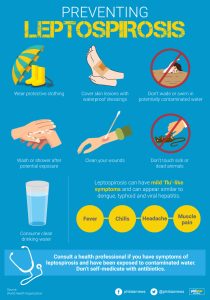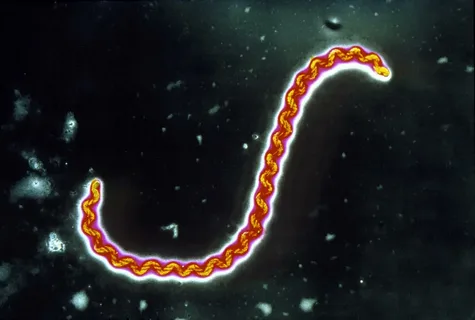Leptospirosis Unveiled
Leptospirosis, a rare bacterial infection transmitted from animals to humans, demands a thorough understanding of its nuances. In this comprehensive guide, we delve into the causes, symptoms, diagnosis, treatment options, and preventive measures associated with this potentially severe infection.
Causes
- Leptospira Bacterium: The primary culprit behind leptospirosis is the bacterium Leptospira interrogans. Animals, particularly dogs, rodents, and farm animals, carry and excrete this bacterium in their urine.
- Human Exposure: Humans contract the infection through contact with contaminated soil or water where infected animals have urinated. Carriers may exhibit no symptoms but can still spread the bacteria.

High-Risk Professions and Activities:
- Occupational Risk: Certain professions elevate the risk of leptospirosis, including farming, veterinary work, and occupations involving underground activities.
- Recreational Exposure: Engaging in outdoor activities such as rafting, swimming, or camping near affected areas increases susceptibility to the infection.
- Geographical Variability: Leptospirosis is more prevalent in warm climates and is particularly common in regions like Australia, Africa, Southeast Asia, Central and South America, and the Caribbean.
Phases of Leptospirosis:
- Leptospiremic Phase: Flu-like symptoms manifest within days to weeks after exposure, lasting up to 10 days.
- Immune Phase: Leptospira bacteria settle in organs, potentially leading to Weil’s disease, characterized by severe complications like internal bleeding, kidney damage, and jaundice.
Recognizing Leptospirosis Symptoms:
Symptoms, which typically surface within two weeks, include:
- Fever
- Headache
- Muscle ache
- Jaundice (yellowing of the skin and eyes)
- Vomiting
- Diarrhea
- Skin rash
Prompt testing is crucial due to symptom similarities with other diseases like the flu and meningitis.

Diagnosing Leptospirosis:
- Blood Tests: Detect antibodies fighting the bacteria. False positives may occur, necessitating a second test.
- DNA Tests: More precise but expensive and time-consuming. Limited availability in certain regions.
- Imaging Tests: Required for severe cases to reveal organ damage caused by the bacteria.
Treatment:
- Antibiotics: Effective antibiotics such as penicillin and doxycycline are prescribed.
- Hospitalization: Severe cases may demand hospitalization, especially when complications like kidney failure or systemic inflammatory syndrome arise.
- Additional Treatments: Depending on the severity, treatment for other health problems may be necessary, including addressing internal bleeding, inflammation of organs, and cardiac complications.
Preventing Leptospirosis
- Water Safety: Avoid unsafe water sources, especially in developing countries. Freshwater activities like swimming, waterskiing, and fishing should be approached with caution.
- Animal Avoidance: Stay away from infected animals, particularly wild rats, known carriers of the bacteria.
- Vaccination: Vaccinate pets, especially dogs, as they can be carriers. Vaccination is crucial for preventing transmission to humans.
- Disinfectants: Use bleach, Lysol, acid solutions, or iodine for cleaning, as these substances are effective against the bacteria.
- Travel Awareness: Stay vigilant during travel, particularly in regions with poor sanitation where leptospirosis is more prevalent.

Leptospirosis in Dogs:
- Symptoms in Dogs: Recognize symptoms such as fever, belly pain, vomiting, weakness, and stiffness.
- Testing and Vaccination: Regular testing is essential, and vaccination is highly recommended for dogs, even those with minimal outdoor exposure.
In conclusion,
a holistic understanding of leptospirosis empowers individuals to adopt proactive measures for prevention and seek timely medical intervention. By recognizing the causes, symptoms, treatment options, and preventive strategies, we can collectively combat the impact of this rare yet potentially severe bacterial infection.












